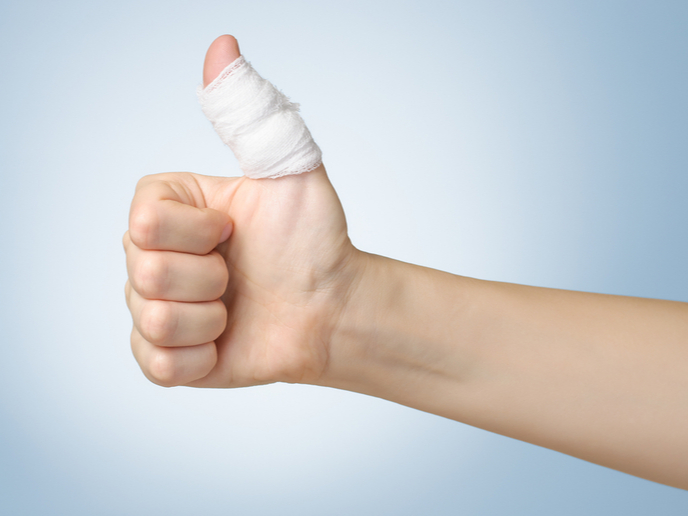Smart materials help heal wounds
MAPs change their mechanical properties in response to their surroundings. A revolutionary development in the fields of solid mechanics and materials science, these materials consist of a polymeric matrix (an elastomer) with miniscule magnetic particles that change their shape and dimensions depending on their state of magnetisation. “The idea is that an external magnetic field induces internal forces in this material in such a way that mechanical properties are modified, such as rigidity, or even changes in shape and volume occur that can interact with certain cellular systems,” explains engineer Dr Daniel Garcia-Gonzalez of the University Carlos III of Madrid in a news item posted on ‘Explica.co’. Dr Garcia-Gonzalez is the first author of a study describing a model used to provide theoretical guidance for MAP systems that could be applied to stimulate healing in epithelial wounds. In the study, the researchers analysed how the properties of an elastomeric matrix and the volume fraction of particles affect the mechanical response of MAPs. Supported by the EU-funded 4D-BIOMAP project, the results of this research have been published in the journal ‘Composites Part B: Engineering’.
Testing polymer response
The research team conducted tensile tests on 16 different manufacturing configurations of the material, analysing various combinations of particle volume fractions and mixing ratios of cross-linking agents (molecules connecting polymer chains) to see how they responded to stress. The results showed a direct relationship between particle volume fraction and MAP stiffness. Increasing particles’ volume fraction led to an increase in overall stiffness for all the mixing ratios tested. Mixing ratio also seemed to play a key role in determining the MAP’s mechanical response. The news item reports that controlling these processes can open the way to new engineering applications, such as soft robotics or a new generation of artificial muscles. Dr Garcia-Gonzalez explains the concept in layman’s terms: “Imagine a person who is on the beach and wants to move quickly. The sand on the ground (the mechanical environment) makes it a bit more difficult for you to move forward than if you were on asphalt or a running track. Similarly, when a cell is on a substrate that is too soft, it will cost more to move. On the other hand, if we are able to modify these substrates and create this athletics track for the cells, we are going to make all these processes develop in a much more efficient way.” Therefore, by controlling the manufacturing conditions of the MAP composite, researchers can give the material the optimal properties needed for a particular application. The team has already identified great potential in this regard for aiding epithelial wound healing and other cellular development processes. The 5-year 4D-BIOMAP (Biomechanical Stimulation based on 4D Printed Magneto-Active Polymers) project began in January 2021. “The overall idea of this project is to … influence different biological processes at the cellular level (such as wound healing, brain synapses or responses of the nervous system), which will allow the development of certain engineering applications that allow us to control them,” explains Dr Garcia-Gonzalez, who heads the 4D-BIOMAP project. For more information, please see: 4D-BIOMAP project web page
Keywords
4D-BIOMAP, magnetoactive, polymer, magnetoactive polymer, elastomer, matrix, particle, volume fraction



